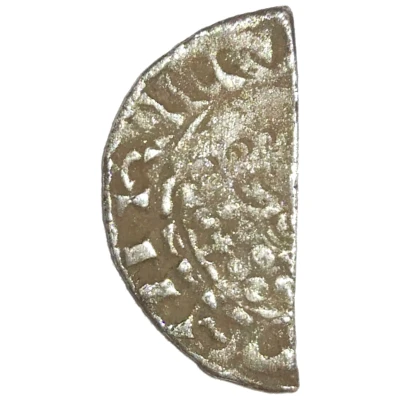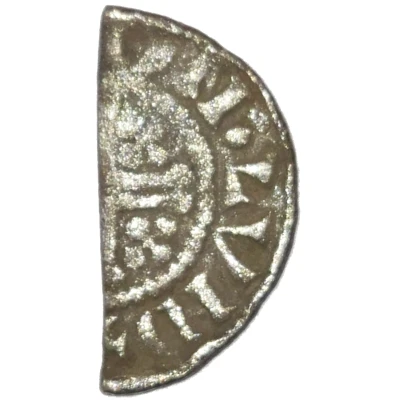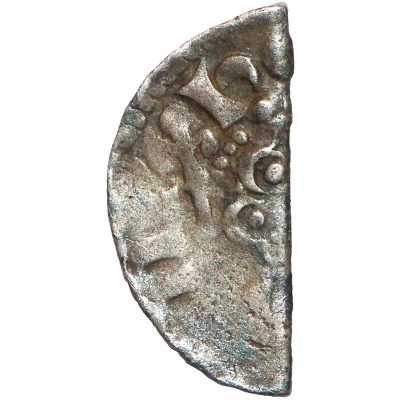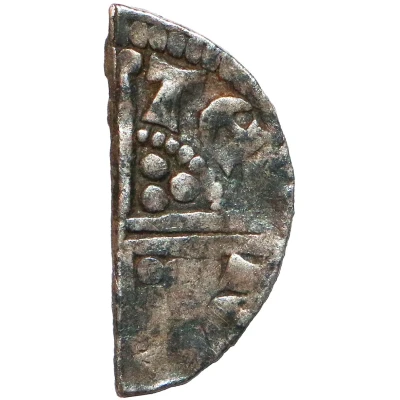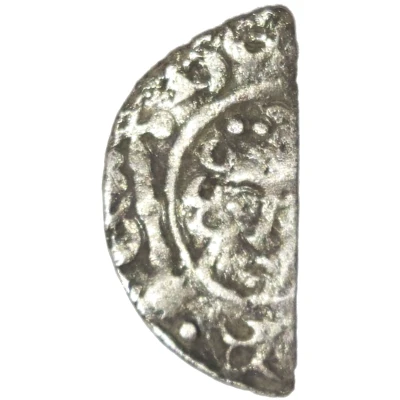
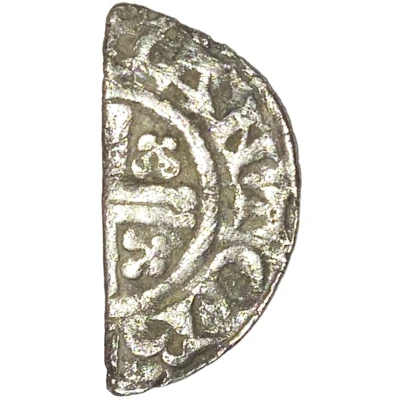

© Pierre.B (CC BY)
½ Penny - Henry III Short Cross type; class 7c ND
| Silver | 0.61 g | 17 mm |
| Issuer | England (United Kingdom, British Overseas Territories and Crown Dependencies) |
|---|---|
| King | Henry III (1216-1272) |
| Type | Standard circulation coin |
| Years | 1216-1247 |
| Value | ½ Penny (1⁄480) |
| Currency | Pound sterling (1158-1970) |
| Composition | Silver |
| Weight | 0.61 g |
| Diameter | 17 mm |
| Shape | Half circle |
| Technique | Hammered |
| Orientation | Variable alignment ↺ |
| Demonetized | Yes |
| Updated | 2024-10-08 |
| Numista | N#412594 |
|---|---|
| Rarity index | 94% |
Reverse
Central voided short cross cross, quatrefoil of pellets in angles, moneyer/mint name around.
Script: Latin (uncial)
Lettering: [ION ON] CAN TER
Lettering (regular font): [ION ON] CAN TER
Translation: Ion of Canterbury
Comment
Numerous moneyer and mint name varieties exist.
Medieval coins were cut into halves and quarters to provide fractional denominations without the need to strike new coins. It is thought these were generally cut at the mint, although it is also likely to have happened during transactions. Cut halfpennies are known in England from Anglo-Saxon times (c. 750s) until Edward I introduced round farthings and halfpennies in 1279.
Interesting fact
One interesting fact about the ½ Penny - Henry III (Short Cross type; class 7c) ND (1216-1247) coin is that it was minted during the reign of King Henry III, who was only nine years old when he ascended to the throne. This coin was part of a series of coins minted during his reign, which saw significant changes in the design and production of coins in England. The Short Cross type, which features a short cross on the reverse side of the coin, was introduced during this time and was used until the 1240s. Despite being made of silver, this coin weighs only 0.61 grams, making it one of the lightest coins of its time.
